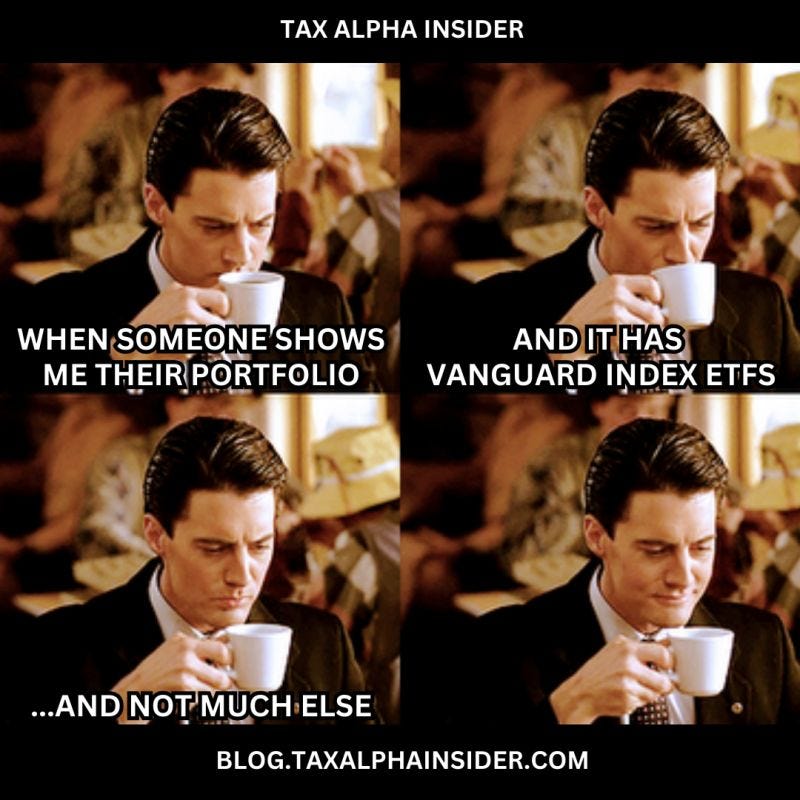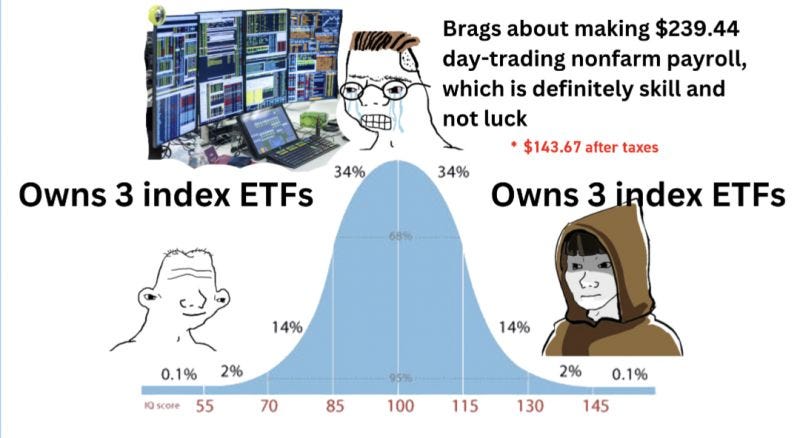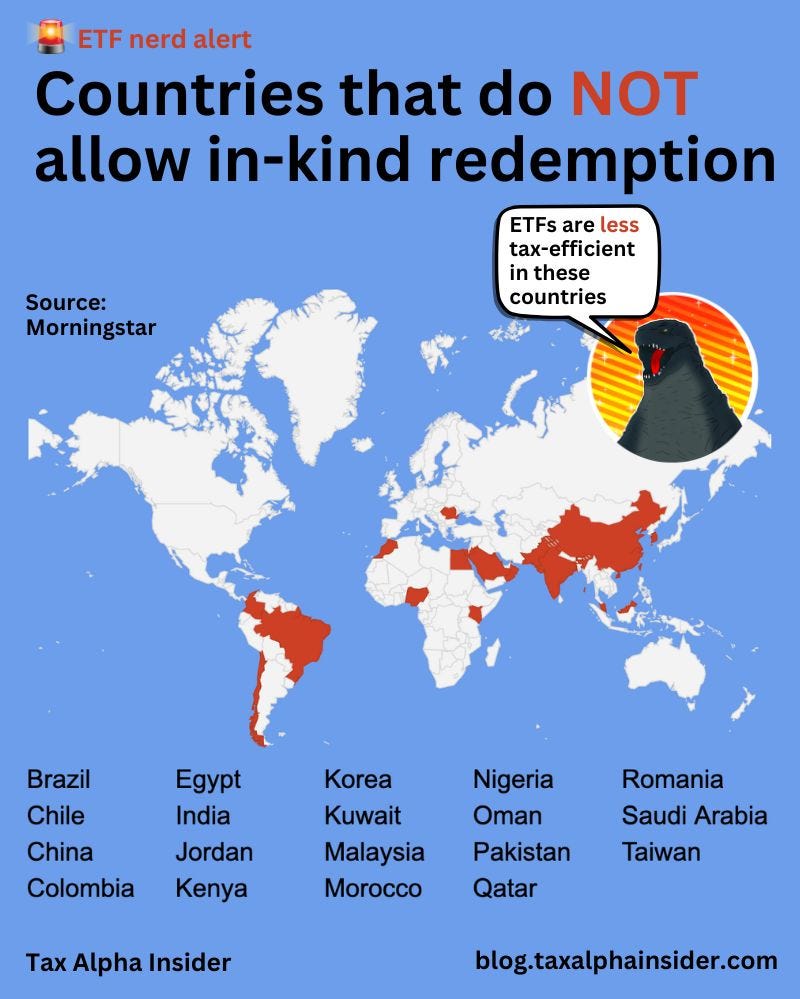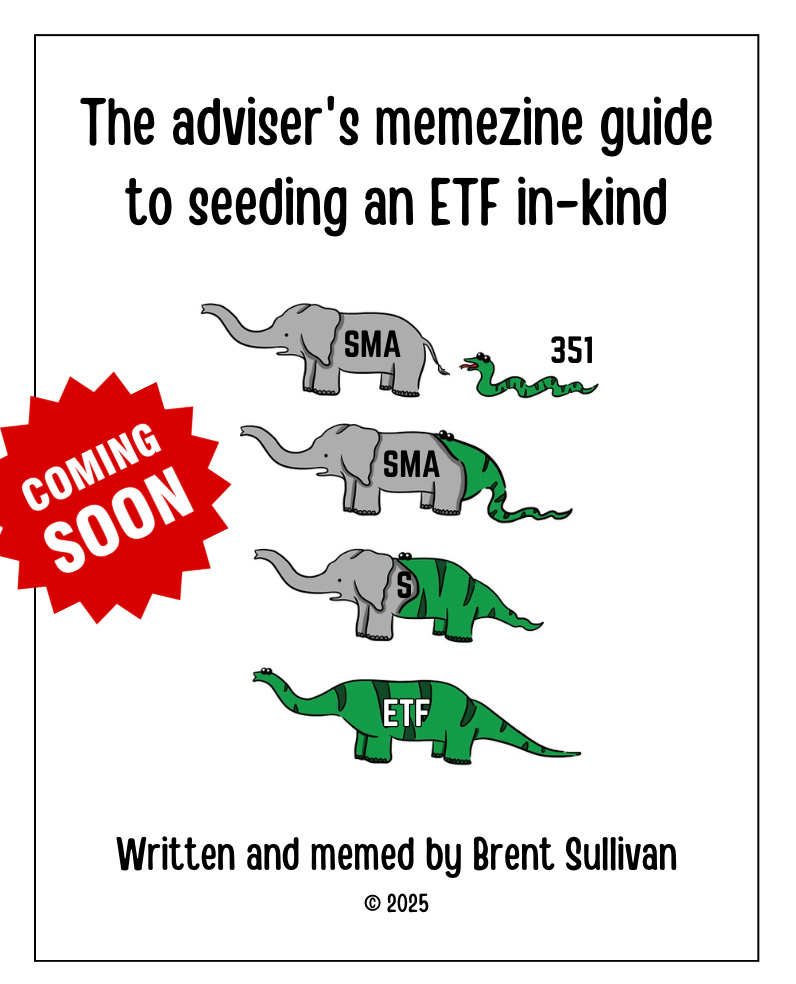How Hill Investment Group gathered $500 million in-kind for its new ETF
The Longview Advantage ETF (ticker EBI) leaned into its adviser relationships
Cool stuff in taxable portfolio management
A $500 Million ETF Will Be Next Big Launch in Tax-Busting Trend
Orion's The Weighing Machine: Brent Sullivan of Tax Alpha Insider
MSCI: Managing Taxes Holistically May Improve Tax Efficiency
Quantinno DEALS Managed Account Platform passed $10 billion AUM
AllianceBernstein Launches Next Generation Balanced Direct Index Platform
Hill Investment Group Partners expects to launch the Longview Advantage ETF (Ticker: NASDAQ - EBI) in late February 2025 with around $500 million seeded in-kind.
I’ve written about seeding ETFs in-kind about a dozen times, including ETFs Could Soon Bail SMAs Out of Lockup (Oct 2024). Readers can find the entire archive in the Section 351 conversion section of Tax Alpha Insider.
Matt Zenz, the Chief Investment Officer of EBI, introduced himself in early December 2024, and we recently caught up again to talk about his process for gathering assets.
“The point of Section 351 is to help start businesses,” Zenz told me.
The point of Section 351 is to help start businesses
Gathering $500 million in expected assets comes from at least three efforts:
Leveraging Hill’s investment network and finding like-minded investors
Offering the option to seed the new ETF in-kind
Competitive cost through direct implementation
Hill Investment Group is a wealth manager that works with many other wealth managers, so it’s fair to say their go-to-market motion was business-to-business rather than a B2B/DTC blend (as had been the case for December 2024’s Cambria Tax Aware ETF launch).
Zenz told me it boiled down to finding other advisers who:
Shared their investment philosophy (roughly similar to Dimensional’s value approach, where Zenz spent several years working as a portfolio manager)
Wished to help clients streamline their portfolios into the operationally simpler, cost-effective, and tax-efficient ETF wrapper (in at least one case, an adviser wanted to shift from active SMA to broadly diversified ETF)
The option to seed EBI in-kind made adoption more likely but required educating fiduciaries on the implications and operations of the Section 351 conversion for several months.
Zenz estimates that it is a roughly two-year process from filing with the SEC to post-effective status, educating partners, and launching.
Once EBI goes live, “it could take one to twelve months” to achieve its target allocation, Zenz told me, “it depends on the composition of the assets we receive and on additional cash contributions afterward,” since cash inflows can help rebalance the portfolio.
EBI’s expense ratio is 0.25% (through Dec 2025), according to the prospectus. The fund achieves this pricing, in part, by having no sub-adviser. Zenz and his partners will manage the assets directly to save costs and implement quickly in response to market changes.
Investors have until February 10, 2025, to indicate their in-kind participation in EBI’s launch.
Once the asset transfer begins, two days before launch, investors should not trade. They remain exposed to the markets during the transition. At the close of the second day, their brokerage accounts should reflect – tax lot for tax lot – the same positions now in shares of EBI.
I asked Zenz if he imagined launching additional ETFs that could also be seeded in-kind. He cautioned that bringing an ETF to market has high upfront costs, but the real bottleneck could be educating partners and getting on their roadmaps for reallocation. “As fiduciaries, their job is making sure the ETF makes sense for their clients.”
Some advisers passed on EBI simply because they wanted more time to reposition portfolios before contributing. “These are ideal partners for a future ETF in one or two years,” Zenz said.









Question about this....when you recommend converting an SMA into an ETF to defer taxes wouldn't that only be attractive if the ETF had a lower expense ratio than the SMA? Generally direct index strategies are 20bps and lower....these ETFs look like they have expense ratio are much higher than that. I could see converting an expensive active SMA but not a direct index. Am I wrong about that?